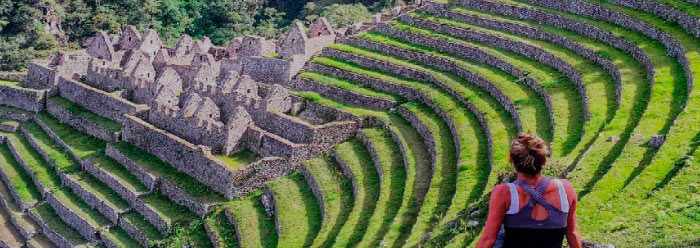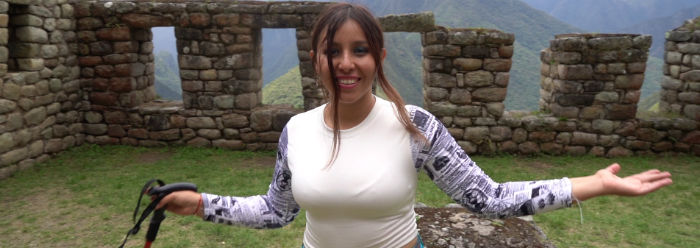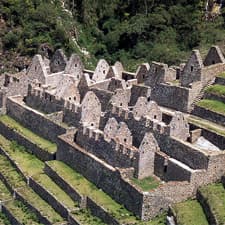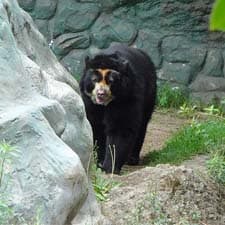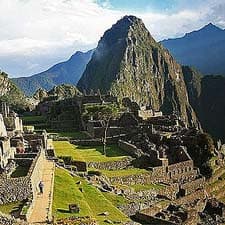Inca Trail Machu Picchu
There are three ways to get to Machu Picchu: with the classic train trip, with the alternative route by Hydroelectric and with the Inca Trail. This last route is considered the most incredible, the most surprising of all. In 4 days of hiking and 3 nights of camping, cross 39 kilometers of trails that the Incas built hundreds of years ago. The goal is the Intipunku, the gateway to Machu Picchu used by the Incas and that only tourists who do the Inca Trail can see. In ‘Icaminoinca’ you can find all the advice you need on this route.The number 1 hike in South America!
The Inca Trail is the best hiking route in Peru. It is also considered the number one in the world and one of the best in the entire planet. The reason? The roads were built by the Incas hundreds of years ago. Go through simply stunning landscapes, with high mountains, snow-capped mountains and jungles full of flora and fauna. And, as the cherry on the cake, it includes a visit to Machu Picchu. For all these ingredients the Inca Trail is a difficult route to match on the planet.
Check the updated Inca Trail availability calendar
Check the availability calendar of the Inca Trail permanently updated. The ’50’ means there are fifty spaces available. The ‘0’ that there are no longer free spaces for the Inca Trail. Choose the month and day of your preference and check the availability of the route of your choice.
Learn more about the Inca Trail and its news
- Inca Trail: prices and discountsDecember 26, 2025
- Lares Trek – Machu Picchu – Yanahuara Route 4 DaysSeptember 22, 2025
- Salkantay trek 5 days to Machupicchu all includedSeptember 15, 2025
- Short Inca Trail Machu Picchu 2 DaysAugust 28, 2025
- Classic Inca Trail Machu Picchu 4 DaysAugust 28, 2025
- Inca jungle: Trek to Machu Picchu in 4 daysAugust 26, 2025
Frequently asked questions about the Inca Trail and other routes in Cusco
Do you have questions about the Inca Trail and the other hiking routes in Cusco? Learn about the ten most frequent questions that tourists ask themselves before taking these walks.
1) Is the Inca Trail open all year round?
Yes, the Inca Trail is open all year round except for February which is the rainiest month of the year. On those days, cleaning and conditioning work is carried out on the route.2) Is it essential to book the Inca Trail online?
Yes, the Inca Trail is a highly requested route by tourists. Therefore, it is necessary to make the reservation in advance. The only way to get availability is buying online.3) How long before should I make the reservation?
The 4-day Inca Trail reservation must be made 6 or 7 months in advance.4) What to do if I don’t get availability?
If you do not get availability for the 4-day Inca Trail, the best option is to do another hiking route such as the Salkantay trek, the Lares trek, the Huchuy Qosqo trek, the Inca Jungle or even the short 2-day Inca Trail.5) What is the best hiking route besides the Inca Trail?
For most tourists and tour guides, the Salkantay trek is the second best hiking route in Cusco.6) When is the best time to go hiking in Cusco?
The dry season (from May to September) offers the best months for hiking trails in Cusco. On those days the rains are not frequent so the climate is the best for walks.7) What does this adventure to the Inca Trail include?
The 4-day classic Inca Trail includes: transportation to the starting point of the trek, cooking equipment (food), porters equipment (luggage load), camping utensils (sleeping bag and trekking pole not included), entrance fee to Machu Picchu and all sites as well as return by train and bus to Cusco.8) Can I do the Inca Trail on my own?
No, the classic 4-day Inca Trail is a route protected by the Peruvian State so it can only be traveled by people with authorizations. Tourism agencies offer such authorizations. People cannot do this route on their own.9) Is there an age limit to do the Inca Trail?
No. Although there is no age limit to do the 4-day Inca Trail, it is best to be between 8 and 65 years old. It is good to be in good physical condition and, if applicable, have the approval of your doctor.10) What to take to the Inca Trail?
The trip to the Inca Trail already includes the main things so the tourist should only worry about bringing personal items: sleeping bag (not included in the tour), trekking cane (not included in the tour), good shoes, a poncho in case of rain, sun block, mosquito repellent, comfortable sports clothes, rehydrating water, personal hygiene items, some cash and a camera to capture the beautiful scenery.
